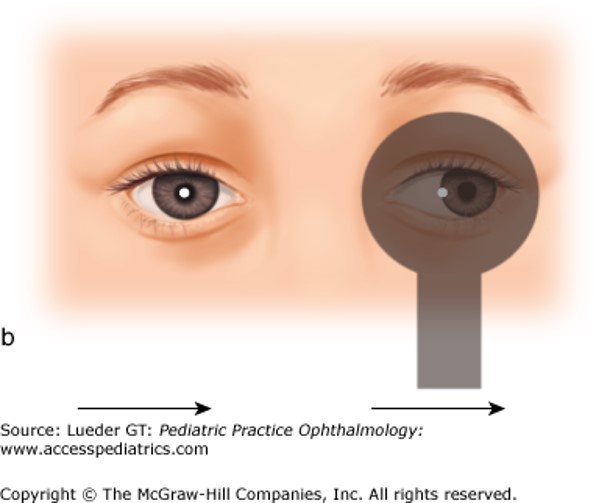Eye Disorders Case

A mother with a history of high hyperopia and strabismus asks you if she should have her 8-month-old son evaluated by a pediatric ophthalmologist. The mother has not noticed any eye deviation, which is confirmed on your examination.

What should your advice be to this mother?
A. Your son’s eyes are straight; do not worry, we can observe.
B. Due to your family history of strabismus and high hyperopia, we should refer him to a pediatric ophthalmologist.
C. If your son’s eyes have not started deviating by now, he will be fine.
D. We can wait another 2 years before referring your son.
E. None of the above.
The correct answer is “B.” Strabismus and high hyperopia (farsightedness) can be familial and with a positive family history, the child should be evaluated. If an obvious deviation is noticed, then immediate referral should be made. In an infant with no obvious strabismus, referral should be made by 1 year of age. Some patients with high hyperopia may not develop strabismus, which is characteristically esotropia, until later in childhood. However, being able to identify these patients early on may prevent the development of possible complications such as amblyopia, or reduced vision. Large-angle deviations should be surgically treated before 24 months of age to allow for the development of binocular motor and sensory function. Nevertheless, the patient should be referred as soon as a deviation is observed. This allows for the early detection and treatment of amblyopia and refractive error. Both glasses and patching therapy can eliminate or decrease an abnormal ocular deviation and may lead to a better surgical outcome if surgery is still necessary.
Sources:
Question & Explanation: Peterson AR, Wood KE. Pediatrics Examination and Board Review. New York, NY: McGraw-Hill Education; 2017.
Photo: Lueder GT. Pediatric Practice: Ophthalmology; 2011.




Create a Free MyAccess Profile
AccessMedicine Network is the place to keep up on new releases for the Access products, get short form didactic content, read up on practice impacting highlights, and watch video featuring authors of your favorite books in medicine. Create a MyAccess profile and follow our contributors to stay informed via email updates.